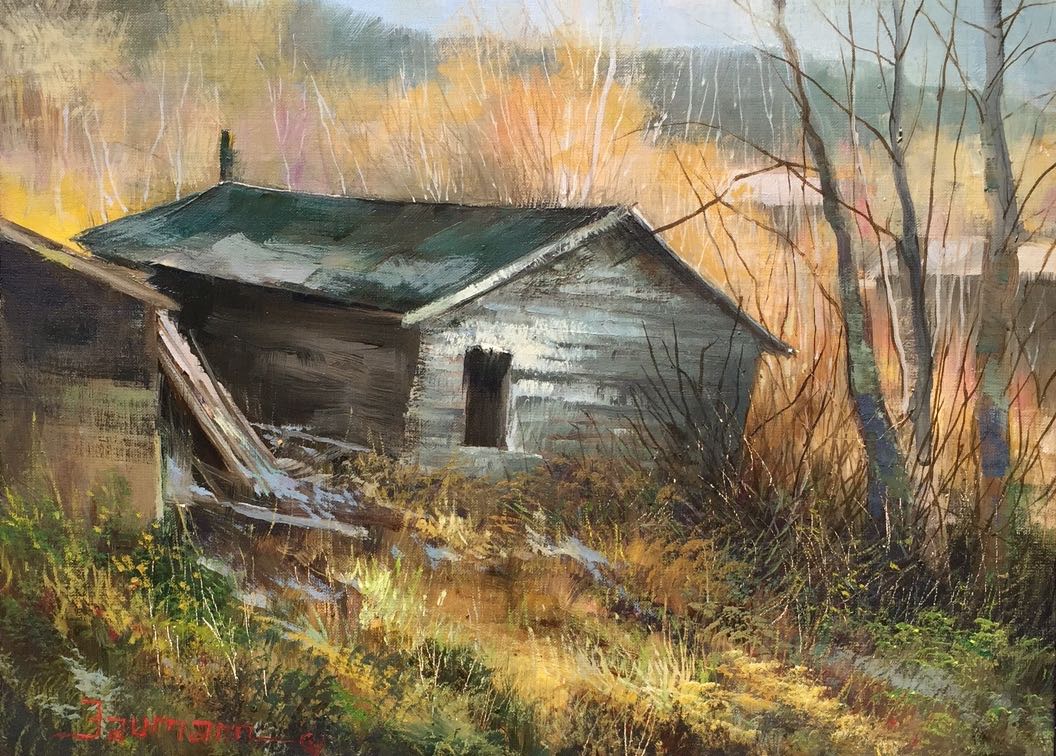Needless to say, I experienced anxiety and had many thoughts about failing to paint well and embarrassing myself; thoughts like “What if I can’t paint the cabin well enough to look like it should look,” or “what if my neighbor passes by, stops and sees that my painting sucks.”
Artists can feel discouraged and avoid painting in public if they listen to their anxiety. The truth is every artist feels fearful and anxious at some time. It is part of the excitement/fear of doing anything that is really important to us. It is what makes great actors give great performances. And the good news is that it is possible to learn how to manage your fear, self-doubt and anxiety. After many years of painting outdoors and in town, I have learned how to reduce my anxiety by filling my mind with positive, empowering, and encouraging thoughts.
Of course, I would rather paint next to group of wild bears high in the Sierras than oil paint on a sidewalk in town. But bears don’t interact with me. I find that my anxiety when I paint in public is often replaced with a feeling of pride when someone passes by and says “Wow, I wish I could paint outside like that!” Painting is a noble and challenging activity. You will be surprised at how many people actually admire you and want to talk with you about what it’s like to paint outside in public places.
Remember, when you paint, you have the satisfaction of doing something you love to do that few others can do, and that your attempt is better that not painting at all. Soon your anxiety will be replaced by feelings of courage and pride in yourself; and with practice, your paintings will get better, too. We frequently regret what we don’t do in life, and regret is far worse to live with than a bit of anxiety.
By the way, the little cabin that I painted was torn down just a week after I painted it. I am so pleased that I seized the opportunity to paint it that day! Life is richer when we live with the victories of accomplishment rather than the regrets of what might have been.
_________________________________________________
Plein air and alla prima artist Stefan Baumann, host of the PBS painting series “The Grand View, America’s National Park through the eyes of an artist” and author of “Observations Of Art and Nature,” travels in his vintage travel trailer painting America’s western landscape. Baumann paints outdoors with oils and canvas capturing stunning vistas, wildlife, western landscapes, National Parks and still life, thrilling art collectors throughout the world. He has many international collectors acquiring his paintings as investments. His painting style is called Romantic Realism with Luminism, and the extraordinary way he captures the effect of light is a truly American style used to paint the Western landscape. He can be seen plein air painting in Yellowstone, Yosemite and in the Grand Canyon. Baumann’s “how to paint” DVDs filmed on location in the National Parks are the very best on the market.


Trackbacks/Pingbacks